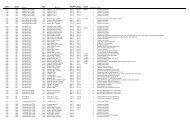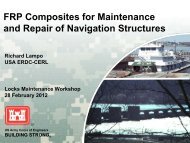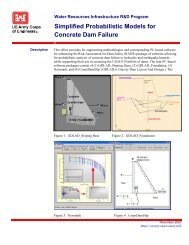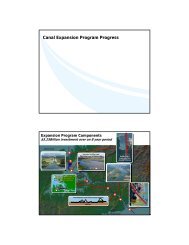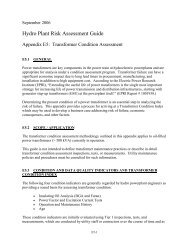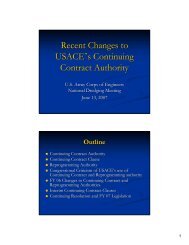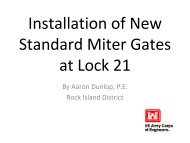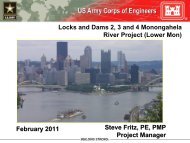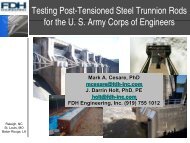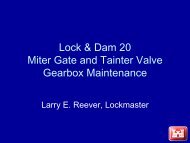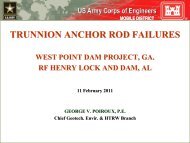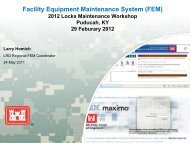Hydro Plant Risk Assessment Guide
Hydro Plant Risk Assessment Guide
Hydro Plant Risk Assessment Guide
You also want an ePaper? Increase the reach of your titles
YUMPU automatically turns print PDFs into web optimized ePapers that Google loves.
Note: If the gate performs unacceptably and the reason relates to the gate operator itself, score a<br />
“No Change” for this section and make an adjustment in the Gates – Operators Performance<br />
section.<br />
Table 14 – Raising/Lowering Performance<br />
Results<br />
Acceptable – Gates lower as designed in time specified by<br />
performance standards or design.<br />
Unacceptable – Gates severely bind or hang-up and/or do not raise<br />
and lower as designed in time specified by organizational<br />
performance standards or design specifications.<br />
Adjustment to<br />
Condition Index Score<br />
No Change<br />
Subtract 1.0<br />
Test T2.1.5: Gates – Slots, Seals, and Sealing Surfaces<br />
Sealing problems can arise from any number of conditions. Seals degrade over time and allow<br />
leakage. Some leakage is normal. Tier 1 assessment should have estimated leakage rate. Tier 2<br />
assessment should be mainly concerned with the cause of leakage. Possible causes for gate<br />
leakage include:<br />
• Seal worn or damaged<br />
• Sealing surface worn or damaged<br />
• Sealing surface corroded<br />
• Sealing surface not straight<br />
• Seal out of adjustment<br />
• Dimensional error of gate or gate slot<br />
• Damaged gate<br />
• Dam superstructure has moved over time, changing the dimensions of the intake<br />
• Obstruction(s) in gate slot<br />
• Cracked or missing concrete or grout around sealing surface<br />
E11-17



